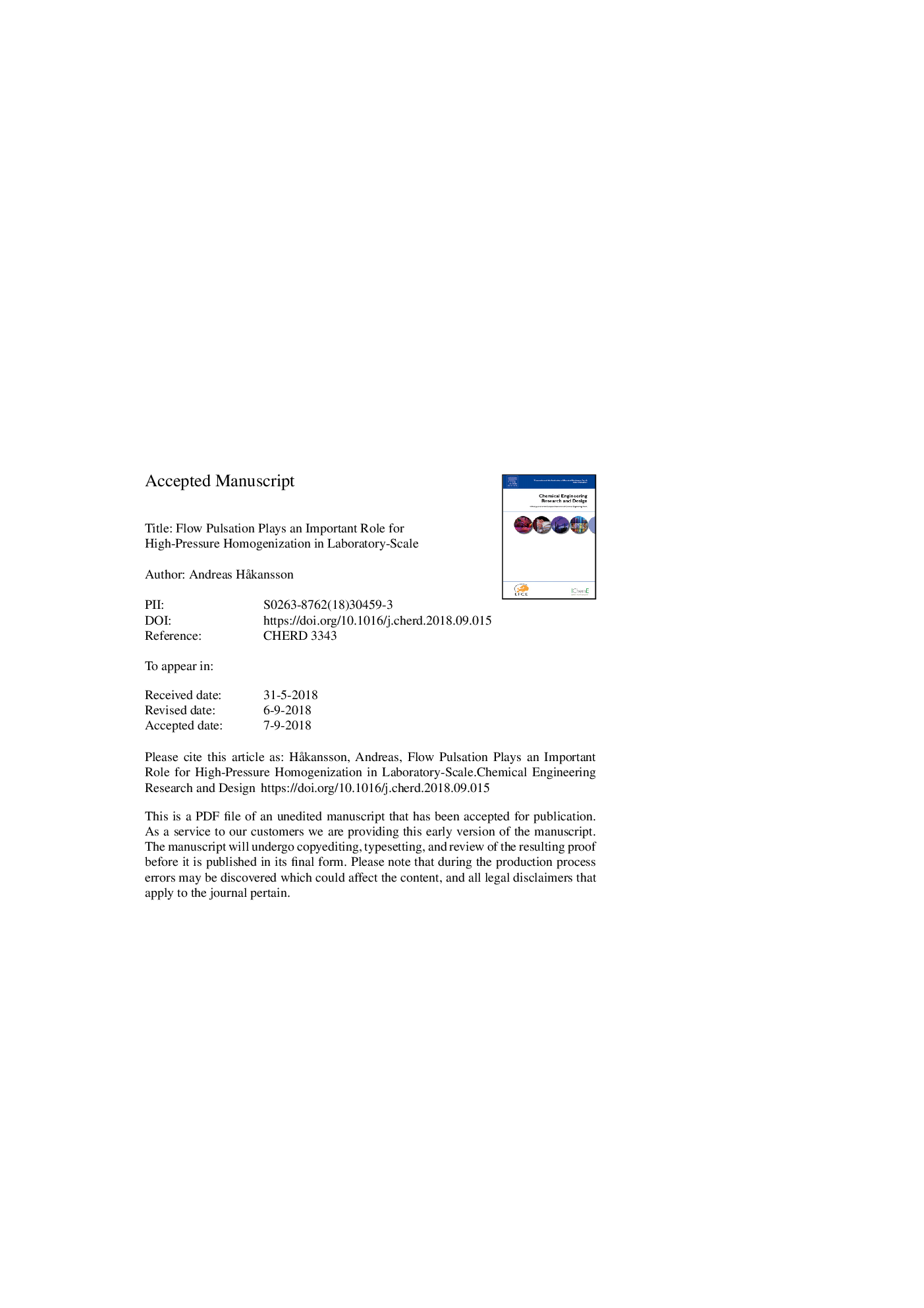| Article ID | Journal | Published Year | Pages | File Type |
|---|---|---|---|---|
| 11032430 | Chemical Engineering Research and Design | 2018 | 36 Pages |
Abstract
Most experimental and numerical investigations of high-pressure homogenizers assume that the valve is fed with a constant flowrate. However, technical homogenizers use piston pumps with either 3 or 5 pistons (production- and pilot-scale machines) or a single piston (laboratory-scale machines). This results in flow pulsation. It is still unknown to what extent this influences valve hydrodynamics. Moreover, it is unknown if the difference in the number of pistons has implications for scale-up. This study uses a piston pump model and CFD simulations to elaborate on these questions. It is concluded that the constant flow assumption is justifiable for homogenizers using piston pumps with 3 or 5 pistons (pilot- and production-scale), but that homogenizers run with a single piston (i.e. laboratory-scale machines) will obtain a substantially different flow field. Most notably, the jet extending from the single-piston homogenizer gap will become highly unsteady and smaller drop sizes are expected (when keeping all other settings constant). This adds to previous findings suggesting substantial fundamental differences between laboratory- and production-scale homogenizers.
Related Topics
Physical Sciences and Engineering
Chemical Engineering
Filtration and Separation
Authors
Andreas HÃ¥kansson,
